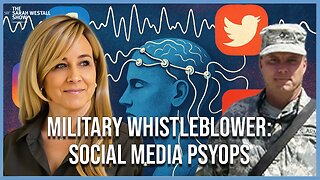Premium Only Content

Employee Engagement Elements: The Top 9 Employee Engagement Pillars
Nine employee engagement elements drive organizational success. High levels of engagement lead to higher productivity, better customer satisfaction, lower employee turnover, and numerous other positive outcomes. Here are several factors or employee engagement pillars, that can enhance employee engagement:
Leadership: Strong, effective leadership is critical. Leaders set the tone for the organization and have a direct impact on employee engagement. Leaders who demonstrate a commitment to employee well-being, who communicate effectively, and who are perceived as competent and trustworthy can drive higher levels of engagement.
Communication: Transparent and open communication is another key factor. Employees need to understand the organization's vision, values, and strategic objectives. Regular updates, opportunities for dialogue, and a culture that values and encourages feedback can promote engagement.
Recognition and Reward: Employees need to feel that their work is valued. This can be achieved through formal recognition and reward programs, but also through regular feedback and acknowledgment.
Career Development Opportunities: Employees who see a clear path for career progression within the organization are more likely to be engaged. Opportunities for training, skills development, and advancement can all contribute to engagement.
Work-life Balance: Offering flexible working hours, remote work opportunities, and a culture that respects personal time and avoids excessive work demands can help to improve engagement.
Healthy Organizational Culture: A positive, inclusive, and supportive organizational culture is vital for engagement. This includes respect for diversity, a sense of camaraderie among employees, a shared sense of purpose, and a commitment to ethical behavior.
Job Satisfaction: Employees need to find their work meaningful and satisfying. This relates to the nature of the tasks they are asked to perform, their level of autonomy, and the extent to which their job aligns with their personal interests and values.
Employee Well-being: Employee well-being, including physical, mental, and emotional health, is increasingly recognized as a key factor in engagement. This can be supported through initiatives such as wellness programs, mental health support, and a safe and comfortable working environment.
Trust: Building a trusting environment where employees feel secure in their jobs and trust in the management team and the organization as a whole is another important factor.
Remember, what works can vary greatly depending on the specific context of the organization, including its size, industry, geographical location, and corporate culture. It's also important to measure engagement regularly to understand what's working and what needs to be improved.
If you're looking for activities for employee engagement or other strategies to increase employee engagement and organizational performance, then take the Workforce Alchemy Challenge at WorkforceAlchemy.com.
Apply to participate in the challenge, gain expert knowledge (for FREE) and earn up to $1000 worth of tools to help your business or department run better and faster without unnecessary drama or expense.
Apply for the Workforce Alchemy Challenge: https://workforcealchemy.com/
Follow us on social:
Facebook:
https://www.facebook.com/people/Workforce-Alchemy/100089012713935/
Instagram:
https://www.instagram.com/workforcealchemy/
YouTube:
https://www.youtube.com/@WorkforceAlchemist
Rumble:
https://rumble.com/user/WorkforceAlchemy
Dailymotion:
https://www.dailymotion.com/WorkforceAlchemy
-
 LIVE
LIVE
SpartakusLIVE
59 minutes agoThe BADDEST Duo in WZ Exhibits PEAK Physique || Duos w/ Sophiesnazz to start, quads later
734 watching -
 LIVE
LIVE
LumpyPotatoX2
1 hour agoSunday Funday on HellDivers - #RumbleGaming
75 watching -
 3:11:52
3:11:52
Esports Awards
4 hours agoEsports Awards: Decade Awards 2025
29K3 -
 1:02:58
1:02:58
Sarah Westall
2 hours agoMILITARY WHISTLEBLOWER: How Social Media Military Level Psyops are Manipulating You w/ Patrick Bergy
6.03K1 -
 30:41
30:41
Stephen Gardner
1 hour ago🔥WHITE HOUSE GETS UNEXPECTED BIG WIN!
4.17K10 -
 9:39
9:39
MattMorseTV
3 hours ago $0.31 earnedVance just DROPPED a BOMBSHELL.
10.4K36 -
 2:40:14
2:40:14
DooM49
3 hours agoThe Grind for Battlefield 6 Skins - A-10 Unlocked
258 -
 1:47:49
1:47:49
Jeff Ahern
4 hours ago $0.31 earnedThe Sunday Show!
120K4 -
 LIVE
LIVE
Spartan
2 hours agoExpedition 33, Halo Later on (Maybe)
46 watching -
 LIVE
LIVE
Meisters of Madness
1 hour agoFinals and Wuchang!
51 watching